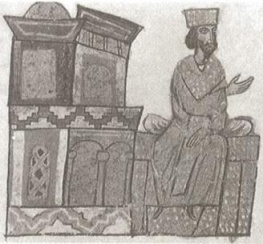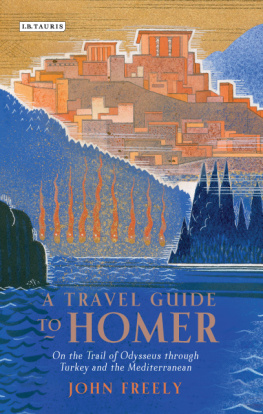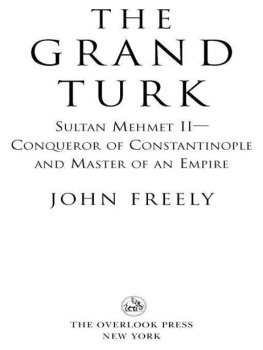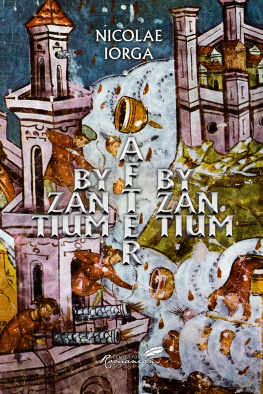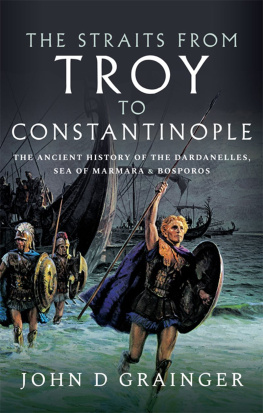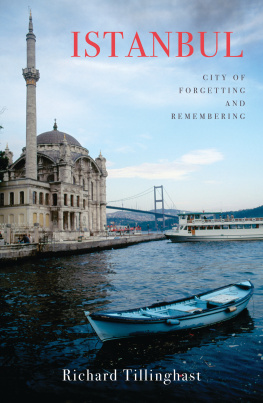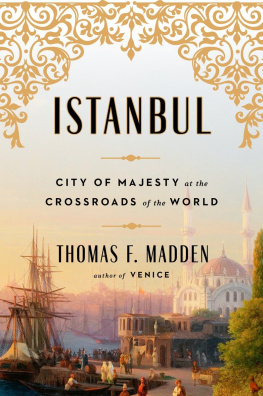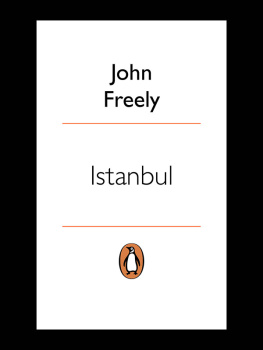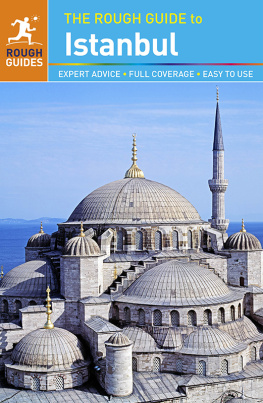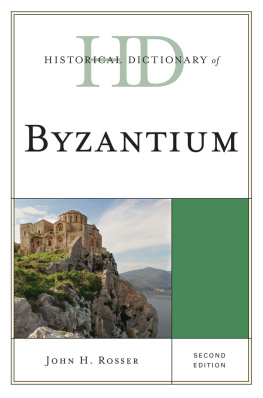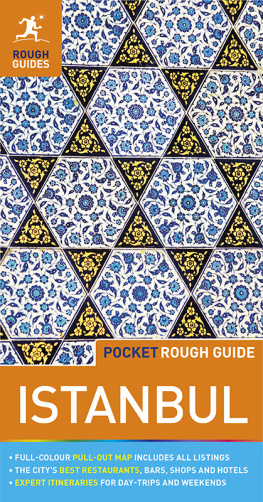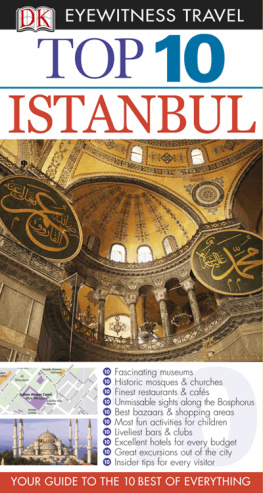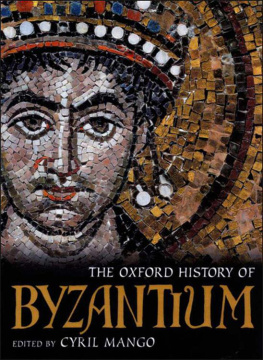PENGUIN BOOKS
ISTANBUL
John Freely was born in New York in 1926. He joined the US Navy at the age of seventeen and served with a commando unit in Burma and China during the last months of the Second World War. He received a Ph.D. in physics from New York University in 1960, and since then he has lived in New York, Boston, London, Athens, Istanbul and Venice. His first book was Strolling Through Istanbul (1971, with Hilary Sumner-Boyd). Since then he has written over twenty books, including Classical Turkey, Strolling Through Athens, Strolling Through Venice, Inside the Seraglio and The Lost Messiah .
I S T A N B U L
THE IMPERIAL CITY
John Freely


PENGUIN BOOKS
PENGUIN BOOKS
Published by the Penguin Group
Penguin Books Ltd, 80 Strand, London WC2R 0RL, England
Penguin Putnam Inc., 375 Hudson Street, New York, New York 10014, USA
Penguin Books Australia Ltd, 250 Camberwell Road, Camberwell, Victoria 3124, Australia
Penguin Books Canada Ltd, 10 Alcorn Avenue, Toronto, Ontario, Canada M4V 3B2
Penguin Books India (P) Ltd, 11 Community Centre, Panchsheel Park, New Delhi 110 017, India
Penguin Books (NZ) Ltd, Cnr Rosedale and Airborne Roads, Albany, Auckland, New Zealand
Penguin Books (South Africa) (Pty) Ltd, 24 Sturdee Avenue, Rosebank 2196, South Africa
Penguin Books Ltd, Registered Offices: 80 Strand, London WC2R 0RL, England
www.penguin.com
First published by Viking 1996
Published in Penguin Books 1998
Text copyright John Freely,1996
All rights reserved
The moral right of the author has been asserted
Except in the United States of America, this book is sold subject to the condition that it shall not, by way of trade or otherwise, be lent, re-sold, hired out, or otherwise circulated without the publisher's prior consent in any form of binding or cover other than that in which it is published and without a similar condition including this condition being imposed on the subsequent purchaser
ISBN:978-0-14-192605-6
For Toots
Istanbul Memories
Contents
Colour Plates and Picture Acknowledgements
COLOUR PLATES
PICTURE ACKNOWLEDGEMENTS
Colour: nos. is Chester Beatty Library, Dublin.
Black and white: pages , Mustafa Erem alikolu.
The Notes on Monuments and Museums section on pages is illustrated by Arlene Brill.
The maps on pages are drawn by Nigel Andrews.



Preface
This is intended to be a well-illustrated introduction to the history of the imperial city that has been known successively as Byzantium, Constantinople and Istanbul, capital in turn of the Byzantine and Ottoman empires. The book is not a formal history of these two world empires, but rather a biography of the city itself and an account of the social life of its people from the earliest settlements up to the present day. It is also a guide to Istanbul's monuments, which are described in the context of the city's living history, particularly with regard to the role that they have played in its political, religious, intellectual, artistic and social life. The book will thus, I hope, be of practical use to all those who intend to visit Istanbul. Modern visitors can compare their impressions with those of earlier travellers quoted in the book, whose comments cover a span of more than 2,000 years, and all of whom, even when they complain of the difficulties and frustrations of living here, eventually reveal that they have fallen under the spell of this most ancient of the world's great cities.
I am grateful to those who have helped me in many ways during my research and writing of this book, particularly Ender Altu, librarian of Boazii Universitesi (University of the Bosphorus); Richard Dewey, librarian of Robert College; Dr Anthony Greenwood, director of the American Research Institute in Turkey; elik Glersoy, director of the Turkish Touring and Automobile Club; Dr Alpay Pasinli, director of the Istanbul Archaeological Museum; and the staff of the library at the German Archaeological Society in Istanbul; also Professor Behin Aksoy, Professor Ahmet akmak, Godfrey Goodwin, Professor Robert Osterhout, and Professor Lee Striker. I am grateful to Anthony E. Baker for his photographs, to Arlene Brill for her drawings of the city's monuments, to Tre zer for providing the Thomas Allom engravings, and to Eleo Gordon for invaluable advice in editing my manuscript.
I am also indebted to the late Professor Hilary Sumner-Boyd, my senior co-author in writing Strolling through Istanbul (Istanbul, 1972), which forms the basis for the section on Monuments and Museums in the present book. He found his last resting-place here and is now part of the city that he loved, his life forming part of its civic memory, so that as long as it endures he will not be forgotten.
Istanbul, 1996
Turkish Spelling and Pronunciation
Throughout this book, modern Turkish spelling has been used for Turkish proper names and for things that are specifically Turkish, with a few exceptions for Turkish words that have made their way into English. Modern Turkish is rigorously logical and phonetic, and the few letters that are pronounced differently from in English are indicated below. All letters have but a single sound, and none is totally silent. Turkish is very slightly accented, most often on the last syllable, but all syllables should be clearly and almost evenly accented.
Vowels are accentuated as in French or German; i.e. a as in father (the rarely used sounds rather like ay), e as in m e t, i as in mach i ne, o as in oh , u as in m u te. In addition there are three other vowels that do not occur in English; these are i (undotted), pronounced as the u in b u t, as in German or as the oy in annoy, as in German or as the ui in s ui t.
Consonants are pronounced as in English, except the following:
c as j in jam; e.g. cami (mosque) = jahmy
as ch in ch at; e.g. orba (soup) = chorba
g as in get; never as in gem
is almost silent and tends to lengthen the preceding vowel
as in sugar; e.g. eme (fountain) = cheshme
PART I
B Y Z A N T I U M

CHAPTER 1
The Strait and the City
up to c . 658 BC
We should ideally approach Istanbul from the sea, as most travellers did for the first twenty-six centuries of its existence, coming to visit the city known in antiquity as Byzantium and later as Constantinople. The ship first passes from the Aegean through the Dardanelles, the Greek Hellespont, and then crosses the Sea of Marmara, the ancient Propontis. As we approach the eastern end of the Marmara we suddenly see the imperial city dramatically taking form between the pale blues of sea and sky, its domes and minarets rising from the hills on either side of the entrance to the Bosphorus, the incomparably beautiful strait that separates Europe and Asia between the Marmara and the Black Sea, the Pontus Euxinus of antiquity. This is indeed the imperial city, the capital in turn of two world empires over a period of nearly sixteen centuries. Monuments and ruins of the Byzantine and Ottoman empires crown the hills on either side of the strait as the ship makes its way into the port, crossing the mouth of the Golden Horn to its pier at the lower end of the Bosphorus on the European shore. We have come at last to the ancient metropolis that the Greeks refer to when they say
Next page
